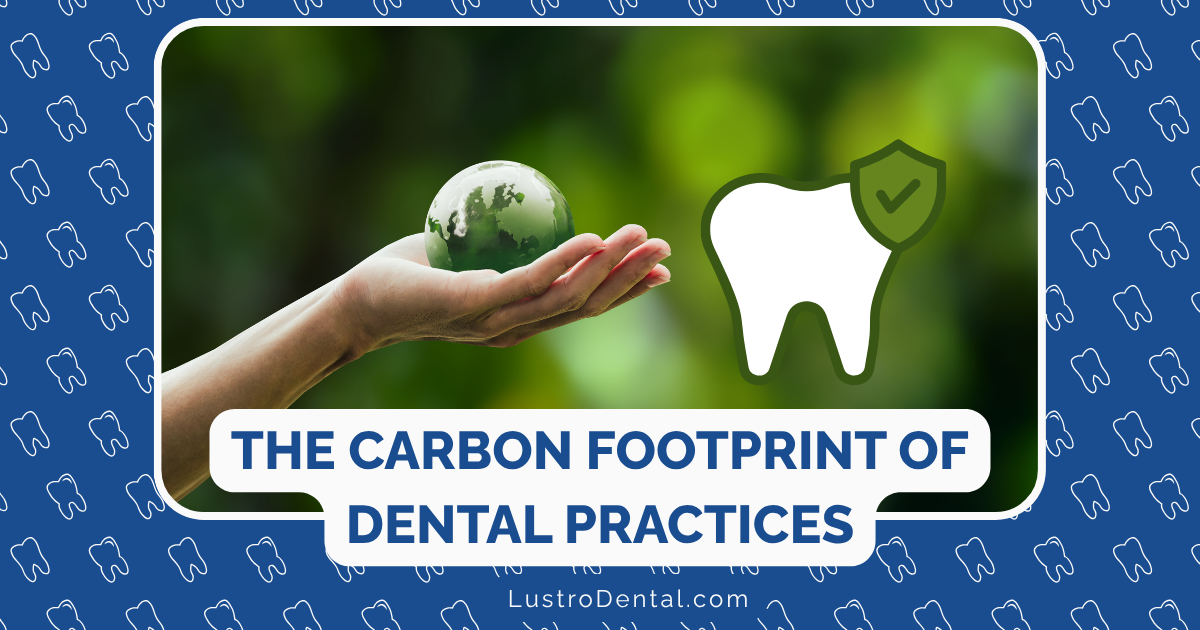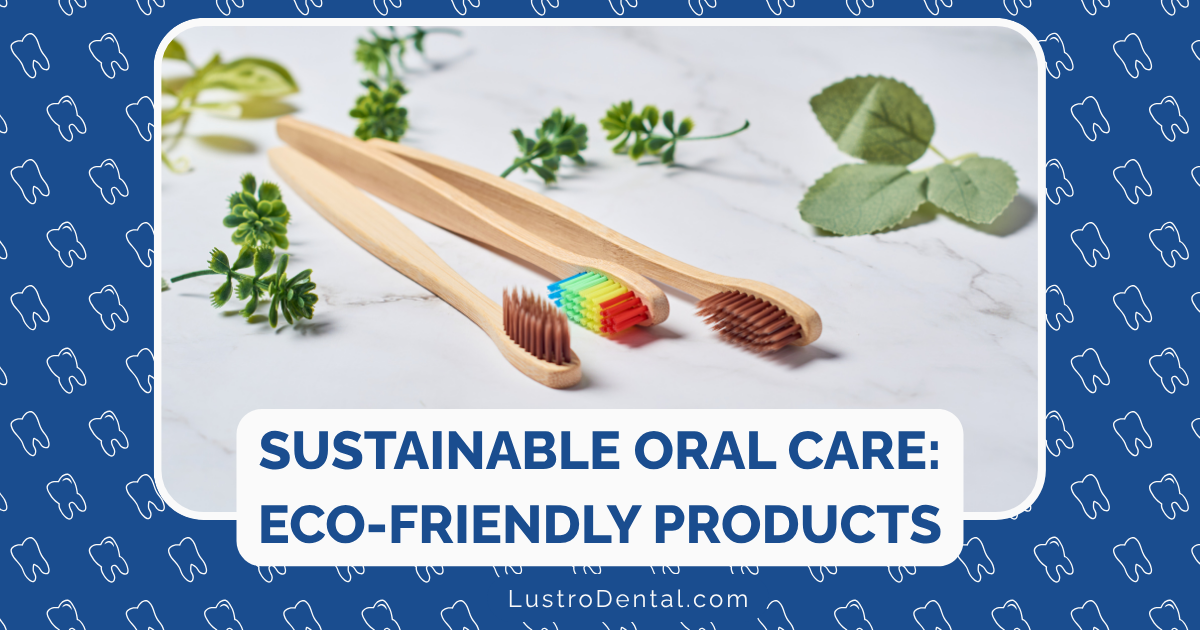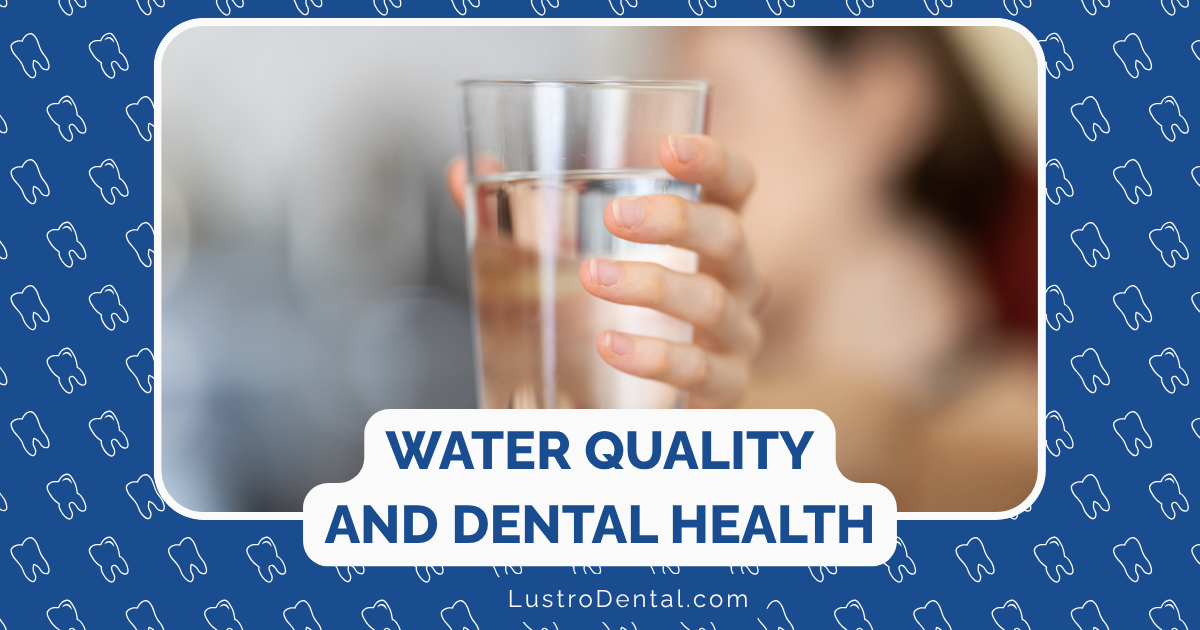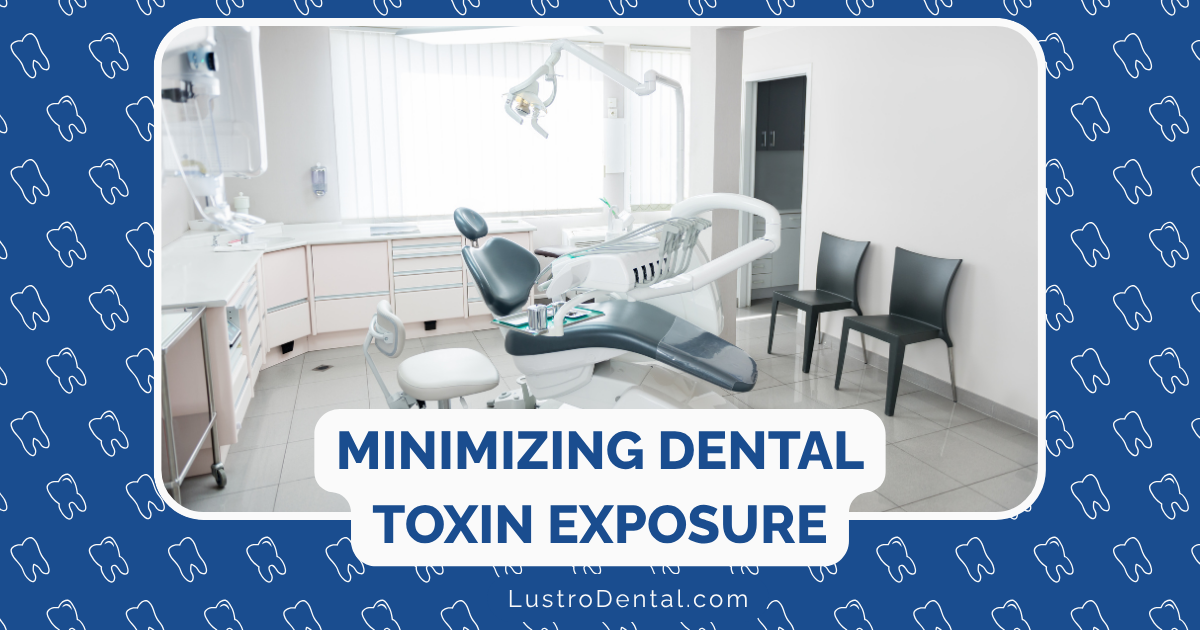Eco-Friendly Dental Practices: What to Look for in a Green Dental Office
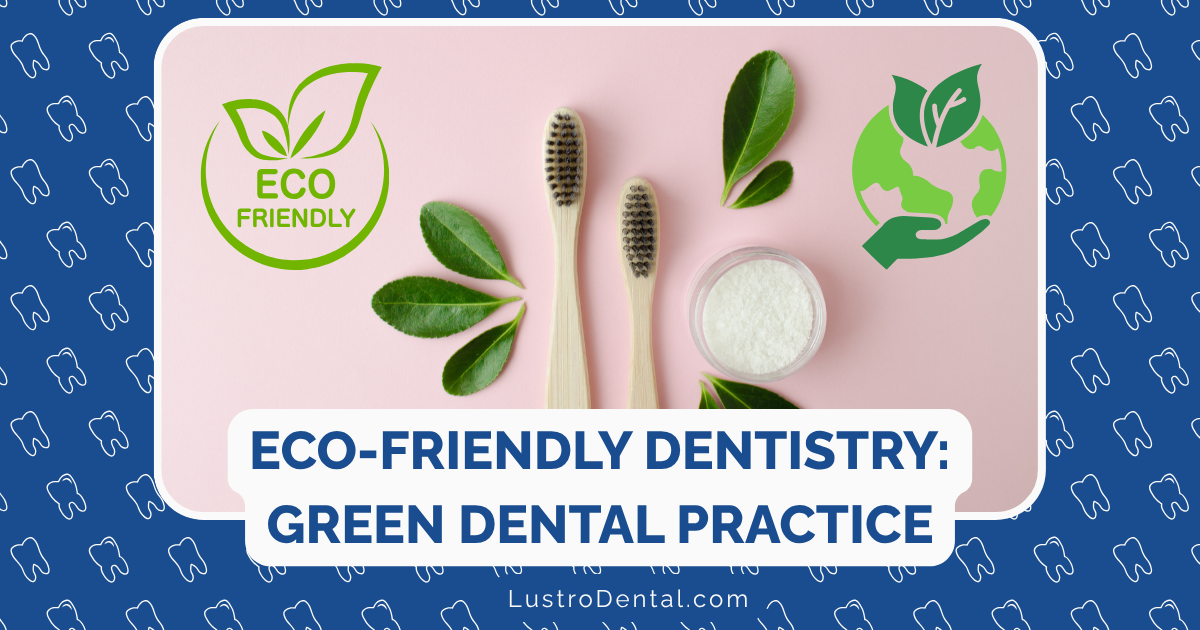
The dental industry has traditionally had a significant environmental footprint—from single-use plastics and chemical waste to high water and energy consumption. But a growing movement in eco-friendly dentistry is changing this landscape. As a dental health advocate, I’m passionate about helping patients find practices that prioritize both oral health and environmental responsibility.
If you’re concerned about your ecological footprint while maintaining excellent dental care, this guide will help you identify truly green dental offices and understand the sustainable practices that make a difference for our planet.
Why Eco-Friendly Dentistry Matters
Traditional dental practices can impact the environment in several ways:
- Water consumption: A typical dental office uses approximately 57 gallons of water daily.
- Energy usage: Dental equipment, lighting, and climate control consume substantial electricity.
- Waste generation: From disposable barriers to chemical waste, dental offices produce various types of waste that can harm ecosystems.
- Carbon footprint: Patient and staff travel contribute significantly to emissions—studies show that 64.5% of emissions from dental services are associated with travel alone.
By choosing an environmentally conscious dental practice, you’re supporting efforts to reduce these impacts while still receiving excellent care. According to the Eco Dentistry Association, green dental practices can reduce waste by up to 80% and significantly decrease water and energy consumption.
The 4 R’s of Green Dentistry
The foundation of eco-friendly dental practices rests on what experts call the “4 R’s”:
- Reduce: Minimizing resource consumption and waste generation
- Reuse: Utilizing reusable alternatives to disposable products when safe and appropriate
- Recycle: Implementing comprehensive recycling programs for eligible materials
- Rethink: Reimagining traditional dental procedures and office operations with sustainability in mind
Let’s explore what specific practices and features to look for when seeking a truly green dental office.
Digital Technologies: Reducing Paper and Chemical Waste
Digital Patient Records
Paperless systems eliminate thousands of sheets of paper annually while improving record accuracy and accessibility. Look for offices that:
- Use electronic health records (EHRs)
- Offer digital intake forms
- Send appointment reminders via text or email rather than postcards
- Provide treatment plans and receipts electronically
Digital Radiography
Traditional X-rays require film and processing chemicals that contain silver and other potentially harmful substances. Digital X-rays:
- Reduce radiation exposure by up to 80%
- Eliminate chemical processing waste
- Require no lead foil or film packets
- Allow for easier sharing between providers, reducing duplicate X-rays
According to the American Dental Association, digital radiography is not only better for the environment but also provides superior diagnostic capabilities with less radiation exposure for patients.
Water Conservation Measures
Water is a precious resource that dental offices traditionally use in large quantities. Green dental practices implement:
- Low-flow fixtures: Specialized faucets and toilets that reduce water usage without compromising function
- Dry vacuum systems: Traditional vacuum systems can use up to 360 gallons of water per day; waterless systems eliminate this waste entirely
- Water filtration systems: These clean and recycle water for appropriate reuse
- Closed-loop water systems: For certain procedures, allowing water to be filtered and reused rather than disposed of
Ask potential dental providers about their water conservation efforts—many green practices are proud to share their specific water-saving statistics.
Energy Efficiency and Renewable Energy
Energy consumption represents another significant environmental impact area for dental offices. Look for practices that have invested in:
- LED lighting: Uses up to 75% less energy than traditional bulbs and lasts much longer
- Energy-efficient equipment: Modern dental equipment with energy-saving features and automatic shut-off capabilities
- Smart thermostats and sensors: These regulate heating and cooling based on occupancy and need
- Renewable energy sources: Some practices invest in solar panels or purchase renewable energy credits
A study published in the Journal of the American Dental Association found that energy-efficient equipment and lighting alone can reduce a dental office’s carbon footprint by up to 30%.
Waste Management and Reduction
Amalgam Separators
These devices capture mercury-containing amalgam waste before it enters water systems. The Environmental Protection Agency (EPA) now requires dental offices to use amalgam separators, but green practices often go beyond minimum requirements with:
- Higher-efficiency separators
- Proper disposal protocols for captured waste
- Regular maintenance and monitoring
Comprehensive Recycling Programs
Look for offices that recycle:
- Paper, plastic, and cardboard
- Metals (including non-amalgam scrap)
- Batteries
- Electronics
- Sterilization pouches (when appropriate)
Sustainable Sterilization Practices
Sterilization is non-negotiable for infection control, but it can be done more sustainably:
- Steam sterilization instead of chemical methods when possible
- Reusable cloth sterilization wraps instead of disposable paper/plastic
- Energy and water-efficient sterilizers
- Non-toxic cleaning solutions
Eco-Friendly Materials and Products
Biocompatible Dental Materials
Some dental materials have lower environmental impacts than others:
- BPA-free composites
- Ceramic or zirconia implants as alternatives to titanium (which has a high manufacturing carbon footprint)
- Glass ionomer cements
- Materials with minimal packaging waste
Sustainable Office Products
Green dental offices extend their environmental commitment to all aspects of their operation:
- Recycled or tree-free paper products
- Non-toxic cleaning supplies
- Biodegradable cups and patient care items
- Reusable or compostable barriers when appropriate
Office Design and Construction
The physical space itself can reflect environmental values:
- Natural lighting: Reduces energy needs while creating a more pleasant environment
- Low-VOC paints and finishes: Improve indoor air quality
- Sustainable flooring: Cork, bamboo, or recycled materials
- Indoor plants: Improve air quality and create a biophilic environment
- Water-efficient landscaping: Native plants that require minimal irrigation
ProDentim: Supporting Your Green Dental Journey at Home
While choosing an eco-friendly dental office is important, maintaining your oral health at home with sustainable products is equally valuable. ProDentim stands out as an eco-conscious choice for daily oral care supplementation.
Sustainable Aspects of ProDentim
- Eco-Friendly Packaging: ProDentim utilizes packaging made from recycled materials and employs sustainable printing practices. Their commitment to reducing packaging waste aligns perfectly with the principles of green dentistry.
- Natural Ingredients: ProDentim’s formula contains naturally derived ingredients including beneficial probiotic strains that support oral health without harsh chemicals or artificial additives that can harm waterways.
- Reduced Need for Intensive Treatments: By supporting preventive oral health, ProDentim may help reduce the frequency of resource-intensive dental procedures. Its 3.5 billion probiotic CFUs help maintain a balanced oral microbiome, potentially decreasing the need for treatments that consume significant resources and generate waste.
- Minimalist Approach: The simple, effective formulation embodies the “reduce” principle of green dentistry by focusing on essential, high-quality ingredients without unnecessary fillers or components.
By incorporating ProDentim into your daily routine, you’re extending your environmental commitment beyond dental office visits to your everyday oral care regimen.
Questions to Ask Your Dental Provider
When evaluating a dental practice’s environmental commitment, consider asking:
- “What specific sustainability initiatives have you implemented in your practice?”
- “Do you use digital radiography and paperless records?”
- “What steps do you take to reduce waste and water consumption?”
- “Do you use energy-efficient equipment and lighting?”
- “How do you dispose of biomedical waste and recyclable materials?”
- “What eco-friendly dental materials do you offer?”
- “Have you received any green certifications or recognition?”
Green Certifications and Recognition
Several organizations provide certifications or recognition for environmentally responsible dental practices:
- Eco Dentistry Association (EDA) certification
- LEED (Leadership in Energy and Environmental Design) certification for the office building
- Green Business Network membership
- Local green business certifications
While certification isn’t the only indicator of environmental commitment, it does suggest a practice has undergone formal evaluation of its sustainability efforts.
The Patient Experience in a Green Dental Office
Many patients wonder if choosing an eco-friendly dental practice means compromising on care quality or comfort. In fact, the opposite is often true:
- Improved air quality: Non-toxic materials and better ventilation create a healthier environment for patients and staff
- Reduced chemical exposure: Fewer harsh chemicals mean less potential for sensitivities
- State-of-the-art technology: Many green practices invest in the latest technologies, improving diagnostic capabilities and treatment outcomes
- Health-focused approach: Practices committed to environmental health often take a more holistic approach to patient care as well
Success Story: Green Dentistry in Action
Dr. Sarah Chen transformed her traditional dental practice into a model of sustainability over three years. The results were impressive:
- 65% reduction in water usage through dry vacuum systems and low-flow fixtures
- 40% decrease in energy consumption with LED lighting and efficient equipment
- 80% less paper waste through digital systems
- 90% of eligible waste now recycled or composted
Her patients report appreciation for the environmental commitment, and many have specifically sought out her practice because of these values. “Our patients tell us they feel good knowing their dental care isn’t coming at the expense of the environment,” Dr. Chen shares. “And our staff experiences less chemical exposure and a healthier workplace.”
The Future of Eco-Friendly Dentistry
The green dentistry movement continues to evolve with promising innovations on the horizon:
- Biodegradable dental products: New materials that break down naturally after use
- Teledentistry: Reducing travel-related emissions through remote consultations when appropriate
- 3D printing: Creating dental appliances with less waste and energy consumption
- AI-powered diagnostics: Potentially reducing the need for resource-intensive procedures through earlier intervention
Making the Transition to Green Dental Care
If you’re ready to align your dental care with your environmental values, consider these steps:
- Research local options: Use directories like the Eco Dentistry Association to find green dental practices in your area
- Start conversations: Ask your current dentist about their sustainability practices—your interest might encourage positive changes
- Supplement with sustainable home care: Products like ProDentim can support your oral health while minimizing environmental impact
- Spread awareness: Share information about eco-friendly dentistry with friends and family
Conclusion: Choosing Dental Care That Aligns with Your Values
As awareness of environmental issues grows, more dental professionals are embracing sustainable practices that reduce their ecological footprint while maintaining excellent patient care. By choosing a green dental office and supporting your oral health with eco-conscious products like ProDentim, you’re contributing to a healthier planet while taking care of your smile.
Remember that every step toward sustainability matters. Even practices that haven’t fully transformed can make meaningful improvements with patient encouragement and support. Together, dental professionals and patients can create a more sustainable future for oral healthcare.
Have you visited an eco-friendly dental practice? Share your experience in the comments below!



